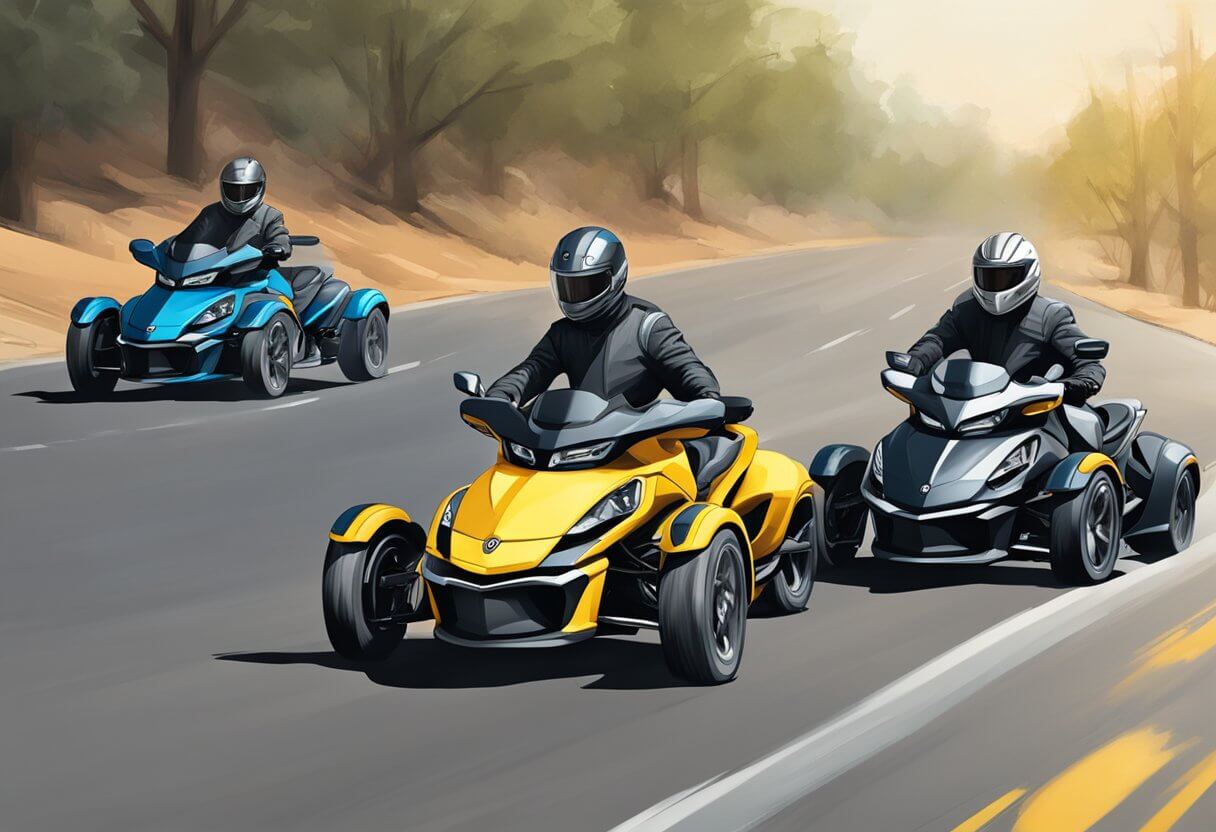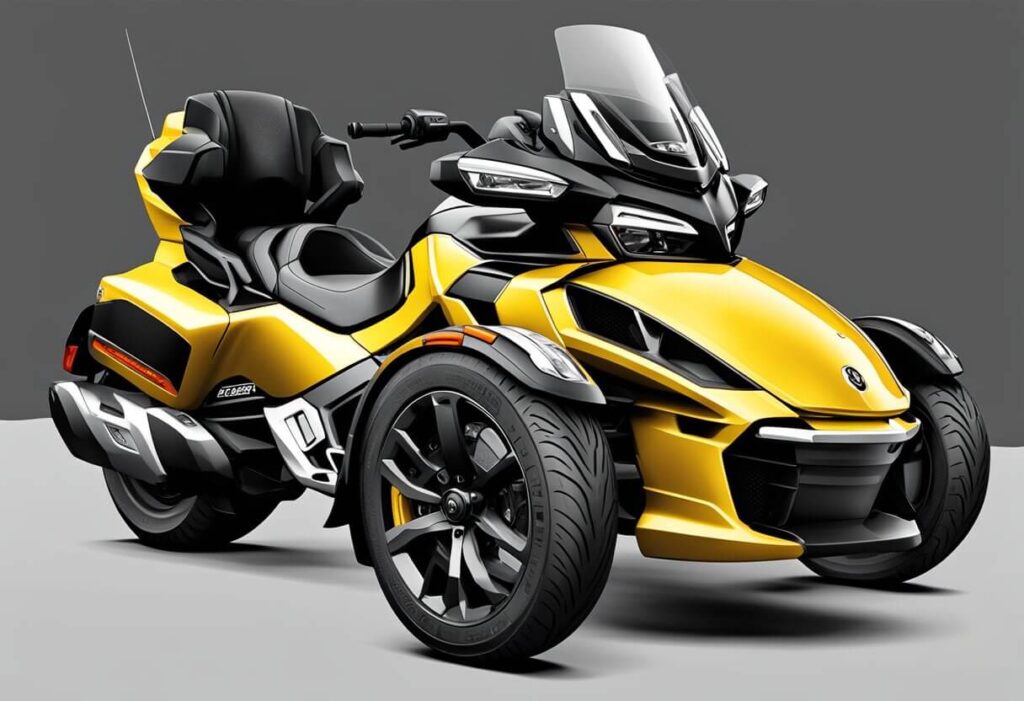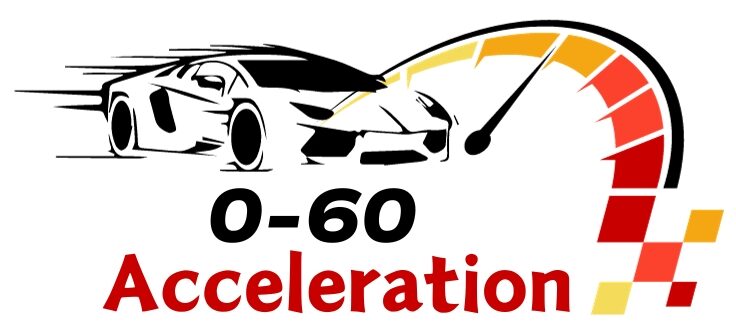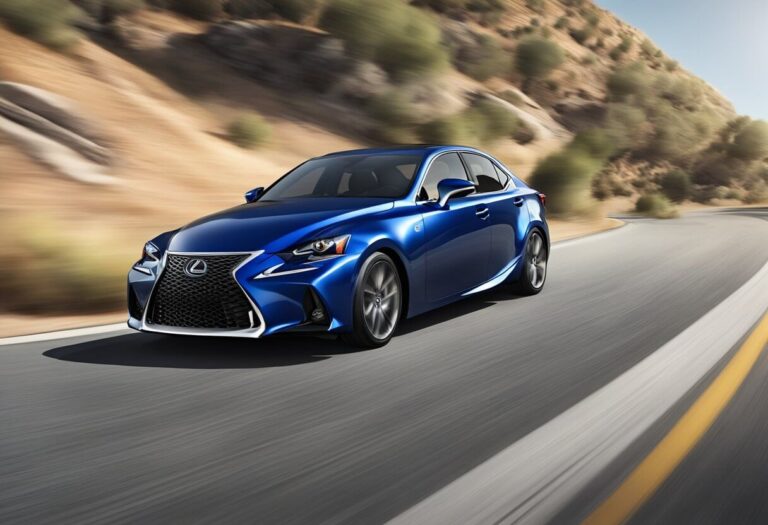
Have you ever wondered just how quickly Can-Am’s unique 3-wheeled Spyder motorcycles can launch from a standstill? Strap in as we explore the jaw-dropping 0-60 mph acceleration times across the entire Spyder lineup – from potent sport models to comfortable touring rigs.
Experiencing thrilling acceleration is one of the biggest rushes for any motorcycle enthusiast. That feeling of being pushed back into the seat as the bike rapidly builds speed is simply intoxicating. But with the Can-Am Spyder, that electrifying sensation takes on a whole new dimension.
Rather than straddling a traditional two-wheeled motorcycle, Spyder riders are treated to the stability and confidence-inspiring stance of a three-wheeled vehicle. So when you hammer the throttle, the Spyder simply squats and rockets forward with incredible poise.
This article reveals the blistering 0-60 mph times achieved by various Can-Am Spyder models over the years. We’ll also explore the key factors influencing the Spyder’s straight-line performance and how it stacks up against other two and four-wheeled performance machines. Buckle up and keep reading to satisfy your need for speed!
The Need for Speed: Why 0-60 Times Matter
For performance junkies, few statistics are more important than the coveted 0-60 mph acceleration time. This metric reveals just how rapidly a vehicle can launch from a dead stop to an expeditious 60 mph pace.
On a motorcycle, lightning-quick acceleration means:
- Getting a jump on traffic from stops
- Easily merging onto highways
- Maximizing thrills on backroad blasts
- Maintaining momentum up steep hills
In essence, stronger acceleration equals more confidence, more safety margins, and yes, more adrenaline-pumping excitement from the saddle. Sport bike and muscle car fans obsess over 0-60 times for good reason.
Dissecting the Can-Am Spyder Lineup: Model by Model 0-60 Analysis

With its unique three-wheeled layout and car-like seating position, you may expect the Spyder to be a slug off the line compared to sportier two-wheeled motorcycles. But as you’ll see, many Spyder variants absolutely slay when it comes to stoplight heroics.
The Beastly Can-Am Spyder F3 Turbo Concept (0-60 in 4.3 seconds)
Let’s start with the absolute performance king of the Can-Am Spyder realm – the devilishly quick F3 Turbo Concept model. Unveiled in 2016, this one-off concept bike packed a serious punch.
Tucked within the Spyder’s distinctive front frame is a turbocharged and intercooled 1330cc inline-triple Rotax engine. This forced-induction monster cranks out a mighty 150 horsepower. That’s enough thrust to shove you back into the upright saddle with real authority.
The performance stats speak for themselves:
- 0-60 mph: 4.3 seconds
- Quarter mile: 12.3 seconds @ 107 mph
To put those numbers into perspective, the F3 Turbo Concept would leave many dedicated sports cars and high-performance motorcycles choking on its turbo fumes. Seriously rapid acceleration for a triple-threat machine flaunting stellar handling and stability too.
The Potent Can-Am Spyder F3 (0-60 in 4.8 seconds)
While the concept’s turbo thrust never made it to production, the “regular” F3 is no slouch in the acceleration department either. Propelling this muscular sport model is a torque-rich 1330cc inline-triple Rotax ACE engine churning out 115 hp and 96 lb-ft of twist.
Several consistent tests have the Spyder F3 ripping to 60 mph from a standing start in just.
The Spirited Can-Am Spyder SE5 (0-60 in 4.5 seconds)
Before the torquey inline-triples arrived, earlier Spyder models like the sporty 2009 SE5 relied on punchy V-twin power for thrills. This 998cc 106hp Rotax V-twin provides plenty of mid-range grunt to keep things interesting.
According to credible sources, the original SE5 can knock down944 mph from a standstill in:
4.5 blistering seconds
Not too shabby for a pioneering design that brought three-wheeled performance to the masses over a decade ago.
The Touring Can-Am Spyder RT (-S) Models (0-60 in 6+ seconds)
For riders more focused on long-distance comfort than dragstrip credentials, the Spyder RT and RT-S touring models make great options. These well-appointed road-trippers feature integrated luggage, cruise control, and roomier ergonomics.
However, that increased size and heft does mean their 0-60 mph acceleration lags a bit versus the leaner sportier models:
- RT: 0-60 mph in 6.8 seconds
- RT-S: 0-60 mph in 6.5 seconds
While not exactly “slow,” the low 6-second sprint times are certainly more laid-back compared to the sub-5 second monsters. But that’s a small trade-off for the RT-line’s impressive touring amenities and all-day comfort.
Factors Affecting Spyder 0-60 Performance

Beyond the raw performance stats, it’s important to understand the key factors that affect how rapidly a Spyder can blast off the line. Knowing what influences straight-line acceleration helps optimize your sprints.
Engine Size and Power: This one’s a no-brainer – models with larger, more potent engines simply make more power to overcome inertia. The torquey inline-triples rule the roost in this department.
Gearing: Short gearing prioritizing acceleration over top speed helps any motorcycle launch harder. Spyders with closer gear ratios can capitalize on their power better from a dig.
Rider/Passenger Weight: More mass requires more force to get moving quickly. A lighter rider aboard a Spyder has an advantage over someone carrying a heavier passenger.
Tires: Stickier, wider motorcycle tires deliver more traction for quicker acceleration. Cold or worn rubber compounds hamper hard launches.
Environment: Air density, temperature, wind conditions, road surfaces, and more can all slightly impact 0-60 times too. Dry, warm days at lower altitudes are optimal.
How the Spyder Stacks Up: 0-60 Comparisons
To illustrate just how potent the sportier Can-Am Spyder variants are in terms of straight-line hustle, let’s compare them against some other performance icons:
Spyder F3 vs Porsche 918 Spyder
The legendary Porsche hybrid hypercar hits 60 mph in an otherworldly 2.2 seconds. However, the non-turbo Spyder F3 keeps things shockingly close with its 4.8
seconds sprint – all for a fraction of the Porsche’s 7-figure price!
Spyder SE5 vs Triumph Speed Triple
Pitting the 2009 Spyder SE5 against a 2009 Triumph Speed Triple motorcycle reveals an extremely close matchup. These two twist-grip titans both demolish the 0-60 sprint in the 4.5 second range – a blistering pace.
Spyder RT-S vs Cruise Ship
Alright, that one’s a bit cheeky. But with a pedestrian (for this company) 0-60 mph time of 6.5 seconds, the Spyder RT-S touring model is still a rocket compared to even the speediest seafaring vessel!
The key takeaway? While the Spyder’s unique three-wheeled layout may seem unorthodox, many models absolutely keep pace in acceleration with some of the world’s most iconic performance machines. Those seeking driving nirvana through maximum traction and planted handling can have their cake and eat it too with the Spyder’s phenomenal straight-line hustle.
Pushing the Limits: Modifications for Quicker Sprints
If the Spyder’s factory-fresh straight-line heroics still leave you craving more, there’s an entire universe of go-faster modifications to explore. Extracting more acceleration is just a few bolt-ons away.
On the induction front, high-flow intake systems and tuners free up the engine’s breathing for increased power. Aftermarket exhaust upgrades chase those same airflow gains for longer pull to redline.
For ultimate power gains, many owners opt for forced induction kits. These supercharger and turbocharger setups force-feed the Spyder’s feisty triple- and twin-cylinder mills with boost for serious underhood muscle flexing.
Beyond raw power, sticky performance tires unlock valuable traction off the line as well. It’s shocking the acceleration you can buy with a simple swap to ultra-high-performance rubber. Finally, lighter-weight components reduce the Spyder’s inertia for harder launches too.
The Spyder Ownership Experience
While objective stats and figures help quantify the Can-Am Spyder’s dragstrip potential, the acceleration sensation behind the bars delivers a uniquely visceral thrill for owners and renters alike.
As Spyder fan forums buzz with rider experiences:
“You feel totally planted, like you’re getting shoved into the back of the seat rather than lifted off the ground like on a two-wheeler. It’s intoxicating!”
“The first few times I really opened up the F3, I instinctively tried to shift my weight around like I was on a normal sportbike. But the Spyder just sticks and goes, no drama at all!”
That combination of forceful acceleration with supreme stance and stability seems to galvanize almost every Spyder rider. The performance is there, but without the customary workout of trying to keep the front wheel harnessed. Simply hold on and enjoy the bucking thrust.
Whether accelerating hard onto the freeway, passing slow traffic, or just addictively hitting apexes then blasting out of corners with the rear tires clawing for traction, describing the Spyder driving experience always circles back to that word – planted. It delivers the performance rush but with a confidence few motorcyclists have experienced before.
Wrapping Up: Can-Am Spyder 0-60 Satisfies Need for Speed
When it comes to fulfilling our insatiable appetite for acceleration thrills, Can-Am’s Spyder lineup brings serious game. Even the “slowest” touring models serve up brisk 6-second sprints to highway speeds that would embarrass many cars.
But it’s the sportier Spyder variants like the SE5, F3, and F3 Turbo concept that truly shine as potential stoplight heroes. Knocking down 0-60 mph runs in the 4-second range simply staggers belief for a three-wheeled machine. Yet dig into the performance specs, and it’s clear the Spyder’s robust powertrains and unique low-slung stance unlock incredible straight-line traction.
Beyond the raw numbers, perhaps the most enticing element is how the Spyder delivers its acceleration punches. That feeling of being effortlessly shoved back into the upright saddle as the tires hook up and the world blurs by. It’s a driving experience like no other, one that longterm sportbike fans may need to experience to truly understand its appeal.
The bottom line? If you crave adrenaline-pumping acceleration coupled with unparalleled road-going confidence and stability, Can-Am’s Spyder family has a fitting model awaiting. From mild to utterly wild, these three-wheeled terrors serve up 0-60 thrills in uniquely grounded fashion. To experience it for yourself, vow to ride one from a local Can-Am dealer or motorcycle rental outfit soon!






